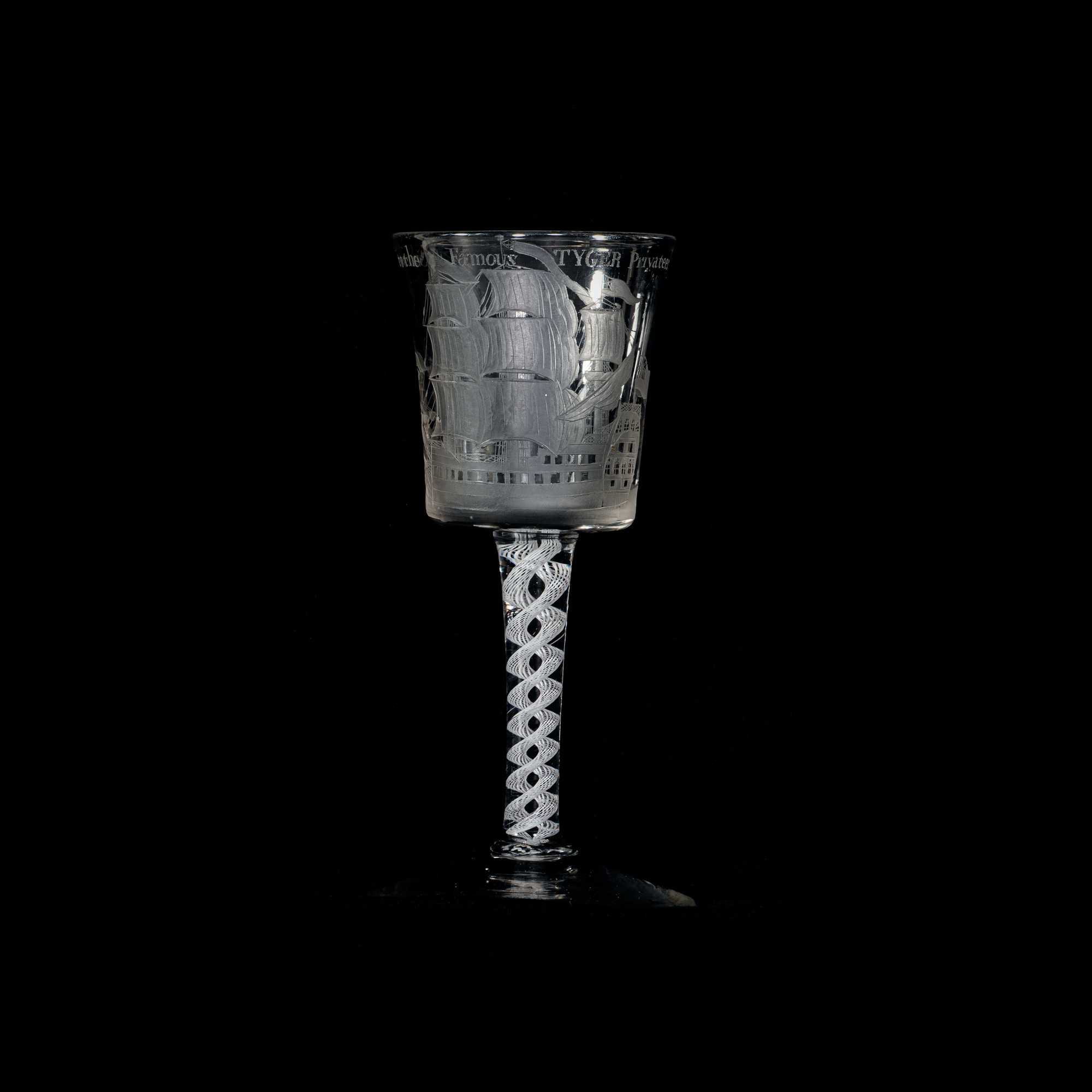
The Famous Tyger Goblet
Splendour from Venice, for an English Privateer captured at Malta.
The island of Malta was a home base not only for the Order of St John corsairs, but for many other European nations. These included Britain, Naples, Spain and France. During the Seven Years’ War, Malta was used heavily. Maltese men were recruited to serve with English and French ships. Heads of European states questioned Maltese neutrality. English corsair ships anchored at Kalkara Bay (now found in contemporary maps as English Creek, whilst the French anchored in French Creek behind Senglea.) In 1758, activity of British privateers was at an all-time high. Investors from Liverpool, Bristol and London built ships and sent them to the Mediterranean, reaping profits for many English investors of those cities.
This activity could not go unchecked and the French Royal Navy ship La Rose (30 guns) was dispatched to the Mediterranean. She called in at Malta as early as February 1758, and by March she was doing what she was sent to Malta to do, clean sweeping the seas of British threats. Her first victim was the 20-gun privateer the Tyger. The English privateer was French built, a fabled ship from St Malo, which had been captured in the last war of the Austrian Succession. Captained by the Scotsman Giovanni Neilson, it was chased by the La Rose 20 leagues off Malta. The two ships fought a battle to the death. The British corsair put up a stout fight, engaging the French with its guns. The Tyger was, however, out gunned and the battle soon turned in favour of the La Rose. As the smoke settled after the battle, out of a crew of 225, twenty-three men lay dead and twelve injured. As was the practice, the captured ship and her equipment and stores were off loaded in Marsamxett and sold to local bidders —a reminder to Europe that Malta was no neutral country but a playground for whoever armed the strongest corsairs.
With British honour injured, an incident soon followed that is immortalised in a beautiful oil painting. The French frigate La Rose was herself hunted by the Royal Navy. Her undisputed command of the sea lanes around Malta would come to an end on 1 July 1758. On that day, in full sail off the coast of Sliema, she ran towards the safety of Valletta. It had pursued by three British ships, including the HMS Monmouth of 70 guns. The match was an uneven one and only the safety of the Maltese harbour could save the La Rose. As she tried to enter Marsamxett harbour, she hit a reef (probably Dragonara point) and within minutes the English ships were upon her. The bastions of Valletta were full of astounded onlookers, including the grand master himself. This was a clear afront to Malta’s neutrality and the artillery at St Elmo was soon ordered to fire unto the British ships. When these did not deter the British craft, the rest of the forts, including Ricasoli and Fort Manuel, joined the fray. As soon as the exchange started, a fire sprang up aboard the French ship and it was clear that she was all but lost. Suddenly, the ship blew up in a huge roar. All looked in astonishment. The English ships made sure their victim had foundered and sailed out of range of the batteries of Malta. Within a few hours, the grand master sent out a delegation to demand answers as to why the Royal Navy had opened fire, breaking the neutrality of the harbour. The English captain of HMS Monmouth replied in French that when he, the captain, had sighted his eminence the grand master looking on, he made sure to salute him with all his guns. The captain, undeterred by the Order’s demand for satisfaction, warned the delegation that if one single shot was fired at his small flotilla again, no Maltese ship sailing to Sicily for the badly needed grain would be safe. Meanwhile, the knight De Sade, captain of the Le Rose, had successfully managed to abandon his command along with his crew. Once on land, they underwent quarantine and lived to tell the tale of their recent defeat at the hands of their sovereign’s eternal enemies.
The beautiful glass goblet seen here is a piece of luxury belonging to the Tyger captured by the La Rose, which was most probably sold at auction in Malta in 1758. The generous, slightly flared bucket bowl fully decorated with a three-masted ship in full sail, probably the Tyger itself, with her three broad pennants flying atop her mast and a English ensign on her stern. One may also admire the figurehead to the bow, inscribed ‘Success to the Famous Tyger Privateer,’ to the rim on a single series opaque twist stem containing a pair of opaque white spiral gauzes over a conical foot. The height of the goblet is 19.4cm high. It stands as a testament to great craftmanship and to the story of privateering in Malta.